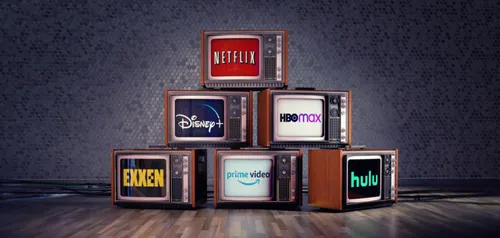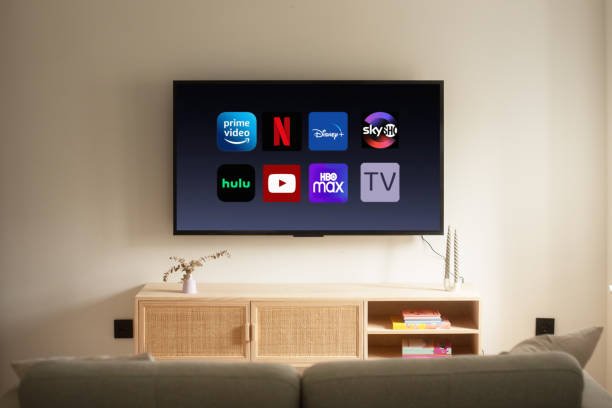The Rise of Streaming Platforms
Hollywood has always evolved with changing technology, from silent films to talkies, black-and-white to color, and VHS to DVDs. But nothing has shaken the industry quite like the rise of streaming services. Platforms like Netflix, Disney+, Amazon Prime Video, and HBO Max have completely transformed how people consume entertainment. The shift from traditional movie theaters and cable TV to on-demand streaming has led to significant changes in how films are produced, distributed, and marketed.
Streaming has given audiences unparalleled access to content from around the world. With a simple monthly subscription, viewers can watch films and TV shows across different genres, cultures, and languages. This accessibility has allowed international content to thrive, with productions from Korea, India, Spain, and other regions finding massive success globally.

The Decline of Traditional Theaters
1. Fewer Theatrical Releases
- Theaters were once the heart of the entertainment industry, but streaming services are replacing them.
- Big-budget movies now debut on streaming platforms, reducing exclusive theater windows.
- Major studios like Warner Bros. and Disney have begun releasing movies on streaming the same day as theaters (known as day-and-date releases).
- Independent filmmakers, who previously relied on film festivals and limited theatrical runs, now see streaming as a viable alternative for wider distribution.
2. Changing Audience Preferences
- Audiences now prefer the comfort of watching new releases at home.
- Streaming offers convenience with pause, rewind, and binge-watch options.
- COVID-19 further accelerated this trend, making home viewing a permanent choice for many.
- The rise of high-quality home theaters and large-screen televisions has also contributed to this shift.

How Streaming is Reshaping Hollywood Productions
1. A Shift in Storytelling
- With binge-watching culture, TV shows have become more cinematic and engaging.
- Filmmakers are exploring longer story arcs and deeper character development.
- Miniseries and limited series are gaining popularity over traditional two-hour films.
- Anthology series and interactive storytelling formats are becoming more experimental and innovative.
2. Big Budgets for Streaming Originals
- Streaming giants invest billions in original content to compete.
- Netflix and Amazon Prime produce blockbuster-level films like Red Notice and The Tomorrow War.
- Celebrities and directors are moving to streaming, attracted by creative freedom and high budgets.
- Streaming platforms have become major contenders at award shows like the Oscars and Golden Globes, proving their growing influence.

The Streaming War: Competition Among Platforms
1. Netflix vs. Disney+ vs. HBO Max vs. Amazon Prime
- Netflix pioneered the streaming boom but faces fierce competition.
- Disney+ dominates with Marvel, Star Wars, and Pixar franchises.
- HBO Max offers high-quality dramas and theatrical releases.
- Amazon Prime and Apple TV+ focus on both quantity and quality to attract subscribers.
- New entrants like Peacock and Paramount+ are adding to the competition, creating a fragmented marketplace.
2. Subscription Overload
- Too many streaming services make it hard for viewers to choose.
- Consumers struggle with rising subscription costs.
- Some opt for free ad-supported platforms like Tubi and Pluto TV.
- Bundled streaming packages (such as Disney+, Hulu, and ESPN+ combo deals) are emerging as a solution.
The Role of Social Media & Digital Marketing
1. Streaming Services Rely on Social Media Trends
- Viral challenges, memes, and fan theories drive streaming popularity.
- Shows like Stranger Things and Squid Game became global sensations through social media buzz.
- Hashtags, influencer marketing, and teaser trailers build anticipation before releases.
2. Influencer & YouTube Reviews
- Influencers on TikTok, Instagram, and YouTube help market new releases.
- Honest reviews and reaction videos influence audience decisions.
- Streaming services sponsor influencers to create promotional content that feels authentic.
- Live watch parties and fan events on social media increase engagement.
Challenges Faced by the Film Industry
1. Declining Box Office Revenue
- Theaters struggle to attract audiences amid streaming convenience.
- Major films underperform in cinemas due to simultaneous digital releases.
- Some theaters are adopting premium viewing experiences, like IMAX and 4DX, to retain customers.
- Smaller indie theaters face closure as attendance drops.
2. Piracy & Subscription Fatigue
- Illegal downloads of streaming exclusives are increasing.
- Consumers cancel subscriptions due to high costs, impacting platform revenue.
- Password sharing remains a major concern for streaming services, leading to efforts to restrict account access.
- Some consumers return to physical media like Blu-rays to avoid subscription fatigue.

The Future of Hollywood & Streaming
1. Hybrid Releases
- Studios may adopt hybrid models, releasing movies in theaters and streaming simultaneously.
- Experimentation with shorter theatrical windows before digital release.
- Some films may debut exclusively on streaming before hitting theaters.
2. AI & Personalized Content
- Streaming services use AI to recommend content based on viewing history.
- More tailored user experiences with custom playlists and interactive films.
- AI-driven analytics help studios decide what type of content to produce next.
3. Expansion into Global Markets
- Platforms are investing in international content (K-dramas, Bollywood, Spanish series).
- Subtitles and dubbing improvements help content reach worldwide audiences.
- Collaborations between Hollywood and foreign studios are increasing, leading to diverse storytelling.
4. The Growth of Interactive Content
- Choose-your-own-adventure films, such as Netflix’s Bandersnatch, pave the way for more interactive storytelling.
- Virtual reality (VR) and augmented reality (AR) experiences are being explored to engage audiences in new ways.
- Gamification elements, such as quizzes and alternate endings, could become more common.
Conclusion: The Entertainment Industry Has Changed Forever
Hollywood is undergoing its biggest transformation in decades. The streaming revolution has altered how movies are made, distributed, and consumed. While traditional theaters may never disappear entirely, streaming has undeniably taken the lead in shaping the future of entertainment. The competition among streaming platforms is fierce, and innovation is key to staying relevant in this digital era.
As technology continues to advance, Hollywood will need to balance traditional cinematic experiences with the convenience of streaming. The industry’s future will depend on how well it adapts to changing consumer habits, embraces new storytelling techniques, and navigates the ever-evolving digital landscape. One thing is certain: streaming is here to stay, and its influence will only continue to grow.
Hollywood’s Revival Era: Why Classic Movie Franchises Are Returning Bigger Than Ever






